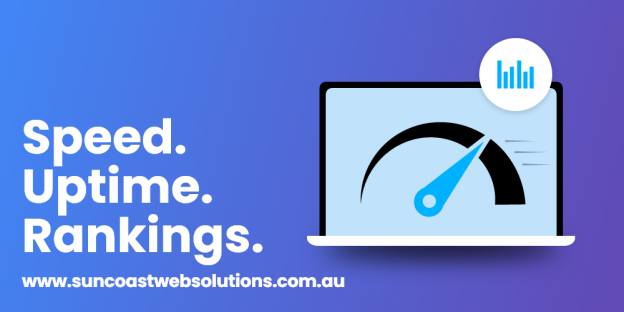Google PageSpeed Insights Update

 6th Dec, 2018
6th Dec, 2018
Google has had a huge impact on businesses over the years. It has helped make a lot successful and killed just as many. This internet giant has always maintained that it wants to keep its users happy with high quality content. There is also a focus on the speed of websites and how they load on different devices. It can be measured through Google’s PageSpeed Insights tool. It also helps webmasters understand how they can help get better performance out of their clients websites. Getting a higher score with the latest Google PageSpeed Insights update is not as easy as it use to be. It requires developers to understand how browsers on devices load websites. They also need to know how websites load and web servers can be tweaked to perform better.
The scoring system is out of 100 and a pretty good score was typically around or just over 80. About 21 days ago the latest version of PageSpeeds Insight tool was released which included the new user interface. This was just the start of the big changes for this tool. The biggest change was the flogging their website scored after the new version of PageSpeed Insights was released.
What has changed?
The recent updates to PageSpeed Insights tool and how it measures your websites performance have been significant. In july this year we were told of the “speed update” by Google and how it would be introduced in to the mobile search arena as well. Finally in november it was released and it has made a lot of internet marketers cringe. The second change apart from the “speed update” was the introduction to Lighthouse. Lighthouse is an automated tool to help improve the quality of a given web page or websites individual pages.
It has also had an effect on website owners where most of them have seen significant ranking drops. This is now forcing them to change the way they look at their website and what content they can deliver. While no one organisation or individual can tell you 100% what is the solution or “how to beat the system”. It is quite apparent that the rules are fairly simple from Google’s standpoint. Follow the system they have devised and you will “win”. Well that is the very lay way of looking at it, but hopefully you get the point.
What Google Expects
Google have said in no uncertain terms that if your website doesn’t load in 1 second you will see page bounce rates jump by 32%. At 5 seconds you are seeing a 90% increase. From there, lets just say that after 5 seconds the numbers are too scary to mention. Page bloating is a killer for your website as well according to Google. If you have too much “crap” on a page it will take longer for the site to load. This in turn means you can say goodbye to a potential lover of your website and/or business.
What website owners saw in the last update was scary for many. We tested a handful of sites before the update was released and we noticed scores for desktop were around 90. On mobile they averaged around 70 to 80. A week after the new update was released these same sites on average dropped to 50 on desktop. On the mobile score we saw them drop down to a score as low as 9. They clearly didn’t even come close to what Google expected. This has in turn caused a few of these sites to drop on average 5-10 spots in their existing rankings.
The PageSpeed Checklist
Pushing past this “bloating” and pressure of having a site load in under 1 second there is a few more key things that Google are pushing for. These things will help you get access to some of the quantity of traffic you are hoping for. These are definitely a few show stoppers and this makes it important for your site to have. It is not just from Google that these things are important to. Yahoo and other vendors using page speed as a ranking factor. We have included a few things your website developer need to consider:
- Minimize HTTP Requests – basically don’t make your page look to fancy, minimize on formatting and most importantly, doesn’t ask for too much help from scripts aand stylesheets etc.
- Look for a CDN – content delivery networks will help deliver content to customers from a source closer to them.
- Utilize GZip compression – basically you have all of your content zipped/compressed, sent to the user and then uncompressed. Benefits are great for users as it means getting access to your website content quicker.
- Avoid broken links and images on a page – as simple as this may sound it is amazing how often this occurs.
- If you have not had your website content reviewed and structured recently, use this as an opportunity to do this valuable job.
The PageSpeed Checklist seems small and hard!
This list seems a little small for such a major ranking factor right? Well, to be honest, this is only a few key things your website developer should consider to help improve the performance of your website. While some of the above may not seem like easy things to do. They really are for those who know what they are doing.
Do not feel for one second that you, as a website owner or a business owner with a website, that you are responsible for the pagespeeds you are seeing. Rather look at it as something that you need to get your website developer to fix. If they can’t fix it we have been working on some proven and effective methods to help get that pagespeed up to where it needs to be. For some website owners it will mean a complete rebuild, for others it will mean fixing and restructuring a few things.
How can Suncoast Web Solutions Help?
Suncoast Web Solutions works with businesses of all shapes and sizes on a daily basis to help them achieve the best possible results with their internet marketing. One aspect of this is completing website health checks which tell customers how their websites are performing and how they can be improved. To find out more visit our website health check page.
we are your one-stop internet marketing solution on the sunshine coast!

 07 5479 3888
07 5479 3888









